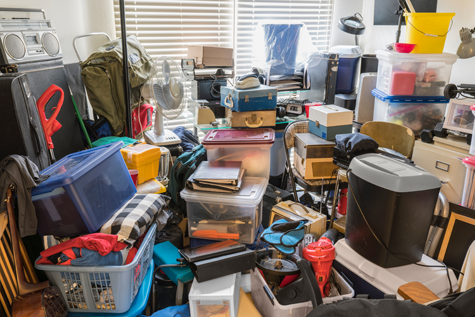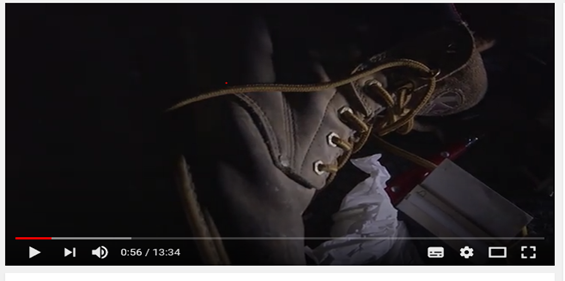Hoarding / Self-Neglect


Self Neglect
Self Neglect covers a wide range of behaviour neglecting to care for one’s personal hygiene, health or surroundings and includes behaviour such as hoarding.
Self Neglect differs from other forms of abuse because it does not involve a perpetrator.
It is seen in all ages but is more common in older people and covers a wide range of behaviour neglecting to care for one’s personal hygiene, health or surroundings and includes behaviour such as hoarding.
Adults may present with a variety of conditions such as substance misuse, self-harm, depression, history of trauma or bereavement.
read more on self neglect +
Examples of Self Neglect include:
- Refusal of personal care
- Refusal of medication
- Refusal of other interventions
- Inability (intentional or non-intentional) to maintain a socially and culturally accepted standard of self-care
- Hoarding
Signs of Self Neglect include:
- Poor self-care leading to a decline in personal hygiene
- Poor nutrition
- Poor healing/sores
- Poorly maintained clothing
- Long toenails
- Isolation
- Failure to take medication
- Hoarding large numbers of pets
Is self-neglect a safeguarding issue?
Self-neglect can be a difficult issue for friends, family, professionals and volunteers to address. There is a need to find the right balance between respecting a person’s autonomy, their rights and choices with a duty to protect health and wellbeing.
In some circumstances, where there is a serious risk to the health and wellbeing of an individual, it may be appropriate to raise self-neglect as a safeguarding concern.
It is important to determine whether the person has capacity to make decisions about their own wellbeing, and whether or not they are able or willing to care for themselves. An adult who is able to make choices may make decisions that others think of as self-neglect.
If the person does not want any safeguarding action to be taken, it may be reasonable not to intervene further, as long as:
- no-one else is at risk
- their ‘vital interests’ are not compromised – that is, there is no immediate risk of death or major harm
- all decisions are fully explained and recorded
- other agencies have been informed and involved as necessary.
Hoarding
Hoarding is the excessive collection and storing of items, often in a chaotic manner, to the point where their living space is not able to be used for its intended purpose.
Many people who hoard don’t see it as a problem or have little awareness of how it’s impacting their life or the lives of others. Others realise they have a problem but are reluctant to seek help because they feel extremely ashamed, humiliated or guilty about it.
Hoarding is considered a significant problem if:
- the amount of clutter interferes with everyday living – for example, the person is unable to use the spaces designed for living in such as kitchens living rooms bathrooms because they have become “store rooms”.
- the clutter is causing significant distress or negatively affecting the person’s quality of life or their family’s
A person with a hoarding disorder may have significant difficulty in discarding or parting with possessions. They may experience distress at the thought of getting rid of items or simply be unable, either physically or through other health-related factors, to get rid of things despite acknowledging that changes need to be made.
Hoarding is considered a standalone mental health disorder; however, it can also be a symptom of other medical disorders. Hoarding could also be a sign of an underlying condition, such as OCD, other types of anxiety, depression and dementia. It is not a lifestyle choice and hoarding must always be treated as a sign of vulnerability.
read more on hoarding +
Types of hoarding:
- Compulsive hoarding – one type of object or collection of a mixture of objects, such as old clothes, newspapers, food, containers, human waste or papers.
- Bibliomania – books and written information, such as newspapers, magazines and articles, as well as DVDs and videos. It can also include ‘data hoarding’, which is the excessive storage and reluctance to delete electronic material which is no longer of use – such as computers, electronic storage devices, copies of emails, and other information in an electronic format.
- Animal hoarding – this is often accompanied with the inability to provide minimal standards of care. The person may be unable to recognise that the animals are at risk. The homes of animal hoarders are often eventually destroyed by the accumulation of animal faeces and infestation by pests.
If you think a family member or someone you know has a hoarding disorder, try to persuade them to come with you to see a GP.
Reassure them that nobody is going to go into their home and throw everything out. You’re just going to have a chat with the doctor about their hoarding to see what can be done and what support is available to empower them to begin the process of decluttering.
Your GP may be able to refer you to a therapist who’s familiar with issues such as OCD and hoarding.
Support for people who hoard
www.apdo-uk.co.uk – The Association of Professional De-clutterers and Organisers who can put you in touch with professionals in your area that are willing to work with hoarders
Clutter Image Ratings are available to download on the hoardinguk.org website. These can then be used to assess the condition of a hoarded home and the hoarder’s level of insight.
ocdaction.org.uk
ocduk.org
NHS Information on Hoarding
https://www.compulsive-hoarding.org/
www.cluttergone.co.uk
https://hoarding.iocdf.org/
Watch Keith's story: a personal and touching film about hoarding made by Birmingham safeguarding Adults Board
